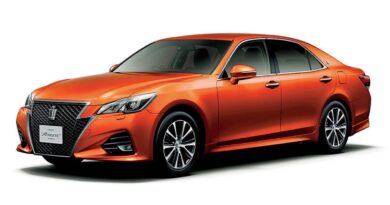Why Honda, Acura dealer showrooms may shrink
American Honda Motor Co. is reassessing how much brick-and-mortar space its dealers will really need in the future to sell vehicles in an era of smaller inventories and digital retail.
Automakers have been known to pressure their retailers to invest in bigger, flashier dealerships. But American Honda is wondering if its dealers might need some facility relief, triggered by the challenges riddling the automotive industry.
Honda is “re-looking at our facility requirements,” Dave Gardner, American Honda’s executive vice president for national operations and sales, told Automotive News.
He did not provide details of what the automaker is considering. But he asked: “To have the size of showrooms that can hold every make and model — is that really necessary going forward?”
Gardner acknowledged that auto retailing is changing in the aftermath of production shutdowns caused by COVID-19 and global supplier bottlenecks, coupled with an industrywide tilt toward online vehicle shopping.
Honda and Acura dealers have been coping with sales lots that have just single digits of days’ supply.
“I joined American Honda in May of 2020, and between our Honda and Acura brands, we had roughly 400,000 vehicles in dealer inventory,” Gardner said. “Today we’re sitting with about 25,000.”
The dealer networks have become more disciplined about selling into their pipelines to keep business moving forward, he said, and that means communicating production dates and estimated arrival times to their customers.
“These are things that in a 400,000-unit inventory environment we were not worried about, because every combination we built was somewhere sitting in a dealer’s inventory,” he said. But now, he said, having a robust 60- to 75-day supply is “a completely inefficient way to run our business.”
“We’re trying to be very cognizant of the dealer’s fixed costs as we move forward and not overburden them, perhaps as we historically may have done so,” Gardner said.
Also, there are benefits to running the business with a 30-day supply, or even 20. “Certainly we’re going to try to run the business with much lower inventory than we had,” he said.
Consumer demand for online car-shopping tools has signaled that a smaller physical footprint is feasible.
Gardner said Honda has observed an uptick in online engagement. Though a very small percentage of shoppers complete the full sales process in a digital environment, the amount of online activity customers participate in before completing the sale has increased, he said.
Another factor influencing the new thinking is the industry’s drift from gasoline-powered vehicles to all-electric. Honda Motor Co.’s lofty target to sell 800,000 electric vehicles in North America by 2030 will demand some facility changes. The company projects by 2040 it will sell only EVs in all regions. Gardner said Honda is being very pragmatic about how it will roll out changes.
“We’ve got just under 1,100 Honda dealers and 280 Acura dealers, and they’re not going to move at the same pace,” he said. “A dealer in California or a dealer in a ZEV state is going to move much quicker into the [EV transition].
“There will be areas of the country that will not come online with battery-electric vehicles for some time,” he said.
That shift also will trigger facility changes, Gardner said, but he did not share details.
Source : Autonews.com




